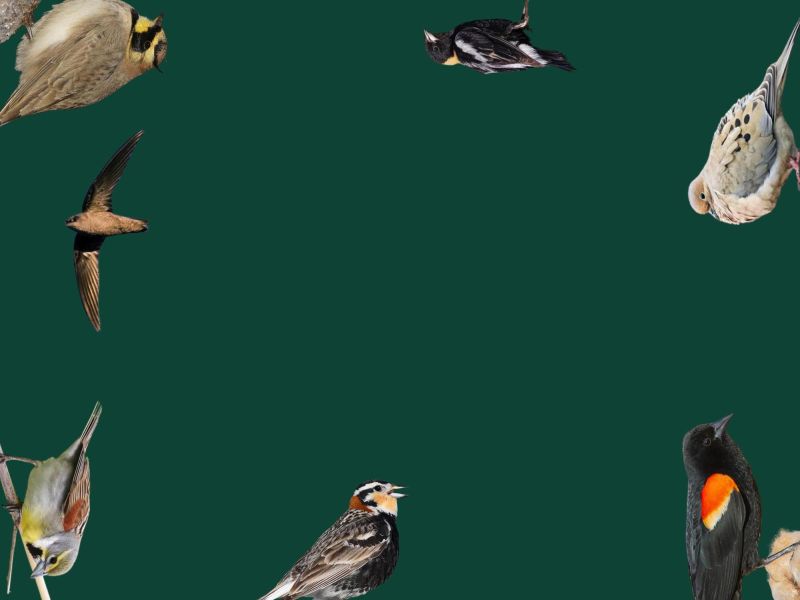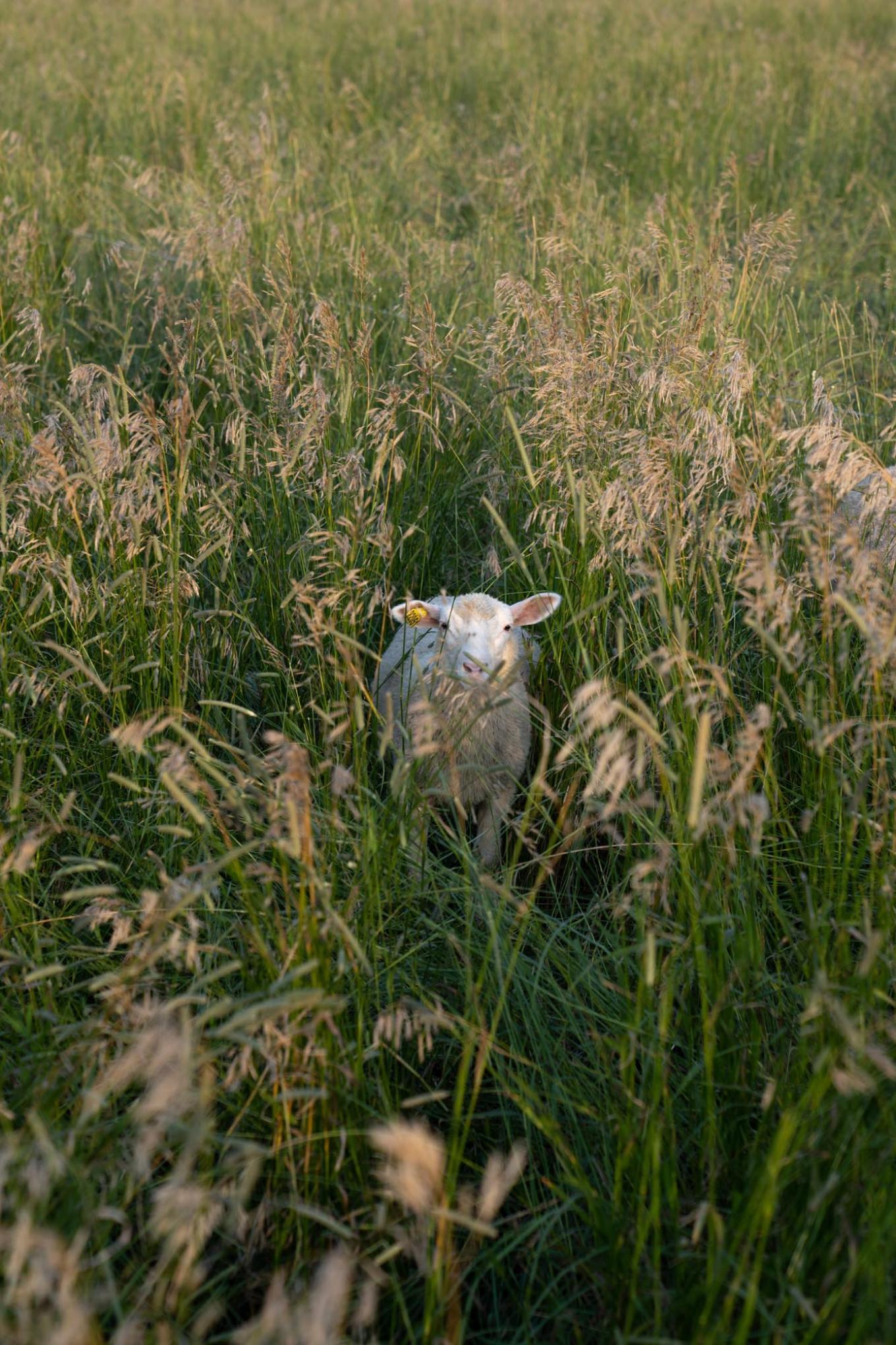
The Mad Agriculture Journal
Putting Biodiversity Theory into Practice
Published on
June 19, 2023
Written by
Kaitlin Kimmel
I come from a long line of biodiversity scientists—in the academic sense, not in the familial sense. This means I have spent a lot of time learning and thinking about the relationship between groups of species and their functions from a theoretical and experimental perspective. I now bring these learnings and perspectives into my current role as the Director of Impact at Mad Agriculture.
In my previous roles in science, despite never having spoken to a land steward before, I often wrote in my papers about the importance of the results of my studies for land management. While well-intentioned, the practical application of my findings often missed how biodiversity is actualized in agricultural landscapes.
Producers and academics often view biodiversity through different lenses. Regenerative farmers frequently rely on biodiversity for their systems to function, albeit in a different manner than generally studied by ecologists. Traditional biodiversity-ecosystem functioning theory is built upon the premise of multiple species-species interactions, whereas producers rely on the different characteristics of species through space or time to maximize function. So, how exactly does classic ecological theory and thought contribute to the understanding of the relationship between biodiversity and function on farms, and where do the two diverge?
ECOLOGICAL THEORY OF BIODIVERSITY-ECOSYSTEM FUNCTIONING
Biodiversity-ecosystem functioning (BEF) is an active area of research in ecology that explores the links between multispecies assemblages (e.g., groups of many different species) and the resultant ecosystem properties (or functions). These relationships are often researched through a loop of theory development, experimental testing, and subsequent theory revision. Experiments and theory all utilize the same framework comparing single species plots to plots with more and more species (e.g., 1-species plots, 2-species plots, 4-species plots, 8-species plots and 16-species plots). The key here is that diversity is viewed at one spatial and temporal scale.
Much of the theory behind biodiversity-ecosystem function relationships is based on interactions between species (i.e., ‘interspecific interactions’). Here, we want to think about species within the same trophic level and taxonomic group (e.g., plants, microbes, birds). The central tenet for why biodiversity matters is that each species plays a slightly different role in the ecosystem because no two species are exactly alike. Different ecologists will think of these differences between species in different manners, but I like to think about the traits that make up a species, how those traits dictate the function of the species, and how traits of different species may interact when those species are in close proximity to each other (thinking about this has literally kept me up at night for years). This concept of species differences and interactions shape how I (and many other ecologists) view the world, and they play into how I think about biodiversity in agriculture.
Productivity Theory
Productivity is how much biomass a landscape produces. It is different from yields in that all plant matter is typically included (or at least what is above ground) rather than just the grain or seed that is harvested. Ecological theory suggests that systems with more species diversity tend to be more productive.
There are three main theories as to why productivity in species rich communities is higher: the selection effect, complementarity, and facilitation. The selection effect is based on the fact that higher diversity communities have a higher chance of having a highly productive species that dominates the production. Contrasting to the selection effect, complementarity is usually defined as ‘niche partitioning’, which means that the more different species there are in a community, the more complete different resources (think nutrients, water, light), for example, can be used. More complete resource use means there is more productivity in diverse communities compared to communities with few species. Similar to the complementarity effect, facilitation is based on the premise that species grown together may bolster the productivity of each other (or at least one of the species bolsters the other one). For example, legumes may provide an extra source of nitrogen to their neighbors. Likewise, deep rooted species may bring water closer to the soil surface for shallow rooted species. All three effects have been quantified in biodiversity experiments, and they may play a role in understanding how on-farm diversity may be beneficial.
Stability Theory
Stability is how consistent productivity (or another function of interest) is through time. It is often broken down into two components: resistance, or how little productivity chances, and resilience, or how quickly a community recovers after a disturbance. Stability of production is an important agricultural concept as more stable production reduces risk of profit loss year to year.
The main theory behind the biodiversity-stability relationship is called the portfolio effect (or the insurance effect—there are differences between these concepts, but are mostly the same for our purposes). The portfolio effect posits that a diverse mixture of species will contain species that perform well under different conditions. Having a diverse set of species allows for different species to function well under different environmental conditions in different years. For example, a plant community may have a mixture of species with different drought tolerances. In wetter years, less drought tolerant species will perform well whereas in drier years, drought tolerant species will perform well. Therefore, while the productivity of individual species may bounce around from year to year, the community as a whole will see little change in productivity.
Actualization of Diversity on Farms
Farmers actualize diversity on their farms through many different strategies that span different spatial and temporal scales. Incorporating diversity in agricultural lands looks very different from a biodiversity experiment. So where exactly do these theories still apply and where do they diverge? Here, I explore these different scales of management and where we can glean some insight from theory that was developed for multispecies assemblages and where new theories need to be created.
A Direct Analog between Ecology and Agricultural Biodiversity
The most directly analogous example of incorporating diversity on farms to biodiversity experiments is replanting low-diversity areas with a higher diversity mix of species (e.g. alfalfa borders to native prairie). Thus, we can take the learnings from theory and experiments and directly apply them to expected outcomes. For example, research has shown that diverse native prairie can reduce nitrate leaching, provide habitat for pollinators and other beneficial insects, and ameliorate the potential acidifying effects of excess nitrogen in soils. Long-lived perennial species can also pump carbon from the atmosphere into the soil and may serve as a source of beneficial microbial populations. It is not known, however, how far these benefits extend into the cropped area nor how these benefits directly impact a farmer’s bottom line.
Scaling across space
Regenerative agricultural landscapes incorporate biodiversity at many different spatial scales. At the smallest scale, farmers are concerned with the microbial diversity in their soils. These interactions and corresponding functions are happening on scales that we often cannot even see without microscopes and complicated lab equipment. Even at this small scale where the function of interest may change, the species-species interactions that are the foundation of classic BEF theory hold. We know that having a diverse and active microbial community in soil pore spaces helps bolster soil health, nutrient cycling, and ultimately plant production. Contrary to traditional BEF experiments and theory, it is often difficult to discern which species are in the community or to create a specific community at this small scale.
Scaling up, farmers manipulate diversity within a field. This can be achieved several different ways when thinking specifically about space. Multiple crops may be planted together in the same field to increase the functionality of the system. A common realization of this is found in the Indigenous practice of the three sisters planting method, where corn, beans, and squash are grown together. Each species plays a role (corn for vertical structure, beans for nitrogen-fixation, and squash for weed and pest suppression) to facilitate the growth of the entire system. The number of crops interacting is likely less than in a natural system, but the interactions between can still bolster productivity through complementarity and facilitation. Likewise, stability may be higher in these systems if some crops perform differently under different environmental conditions.
In larger scale row cropping systems, species may be interseeded to increase the function within a field. Interseeding can be done in various manners depending on the goal and plant species involved. An interesting example is solar corridors, whereby crop rows are spaced further apart but planted with a higher density of individuals and another crop is planted between rows. This is an interesting case of scale. Within a row is a monoculture, but the whole field harbors two or more intentional species. This system depends on the different functions of the crop species and the species between rows. Spacing the main crop further apart may help it capture more light and, therefore, photosynthesize more and create more biomass (though maybe not increase yields). If the between row plants are a second cash crop, it can potentially increase the stability of production within a field. It can also serve the function of increasing soil health or providing fertility for the next year. This is analogous to facilitation and complementarity for increasing productivity in diverse species mixtures although applying those concepts across time rather than space.
At the farm level, farmers also often plant different crops. Thus, one field may be a monoculture, but across their entire system they may be cultivating several different crops. This diverse mixture of crops grown within a year functions the same way that the portfolio effect does for community stability. Yields and market prices of different crops may vary between years, but the diversity of crops should hopefully stabilize the income the farmer receives from their crops. However, there is little theory on how planting multiple crops across this large spatial scale impacts productivity.
At these larger scales, theory is much less developed. In agricultural settings, species-species spatial relationships are much more controlled. Further, it seems logical that many producers are picking species that are productive, and thus, relying on an artificial selection effect to bolster production at larger spatial scales.
Scaling across time
Similar to how different spatial scales of diversity are utilized by producers, different temporal scales are also utilized. Farmers may plant several different crops within the same year, but in sequence. Thus, the field is a monoculture at any one point in time in the year, but through the year, the field harbors several different species. A common actualization of this is through cover cropping species - where the cover crop can be another cash crop or be used for its ecological function like nitrogen fixation. There is no BEF theory to understand the utilization of diversity through time. It is logical to assume that there are likely components of the selection effect, complementarity, and facilitation occurring, but it is unclear to what extent the temporal species interactions matter.
Similar to planting multiple species within a year, farmers utilize crop rotations to diversify field diversity between years. Again, within any one year, the field is a monoculture, but aggregating between years the field has biodiversity. Some years of the rotation may serve as a ‘give year’ whereby the current crop is planted solely for building soil health and fertility for the subsequent crop. In this case, farmers consider both the temporal scale of diversity and the field-level spatial scale. Farmers using the give year strategy plan on having some percentage of their fields in the cash crops while letting the rest of their fields be in the cover within one year, and the fields in each state will change year to year.
Little theory has been explicitly developed to understand diversifying through time. It is indeed a more complex problem as one needs to consider not only species interactions but the disturbance to the system through time. However, diversifying temporally is based on the fact that different species function differently and impact the system differently, which is similar to complementarity and facilitation between species within a time period. For example, legume cover crops may enhance soil nitrogen for the subsequent cash crop. Likewise, simply keeping living roots in the ground helps build soil structure and soil biology for the next crop. However, at these longer temporal scales, function depends on between-year species interactions to occur—a place where ecological theory and farm practice diverge.
Beyond The Farm Ecosystem
Utilizing biodiversity on farms to increase function can also play a role at scales reaching beyond the farm borders. Many species with large habitat ranges or needs can utilize agricultural lands if there are suitable spaces for these species. Instead of being antagonistic to biodiversity, farms can instead play an important part in creating and sustaining habitat refugia or corridors. Creating these networks throughout agricultural-dominated landscapes will take coordinated effort among those stewarding the lands, but even having a few farmers begin to think in this manner can start making a difference.
Biodiversity is incorporated into row cropping agriculture in manners that deviate from the traditional biodiversity experiment conducted by ecologists. However, when considering how biodiversity is manipulated spatially, current BEF theory is still very applicable. In contrast, when considering how biodiversity is manipulated through time, new BEF theory and experiments need to be developed. The connection between ecological theory and agriculture practices is only one lens through which to understand how agroecosystems function. Through various scientific, mathematical, and philosophical lenses we can begin to more fully understand the multitude of benefits and tradeoffs of biodiversity integration in agroecosystems.

